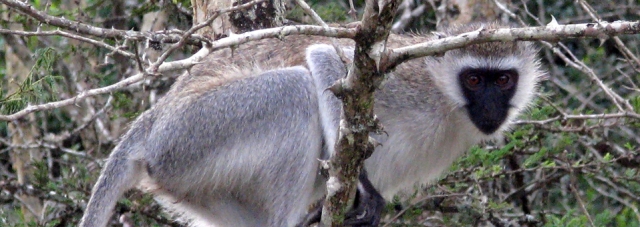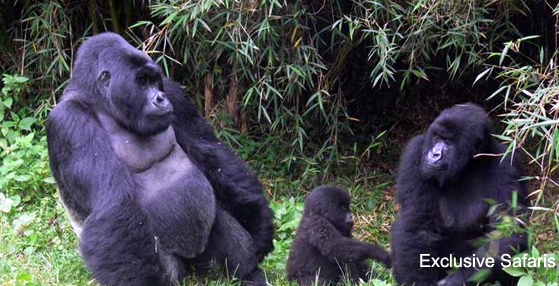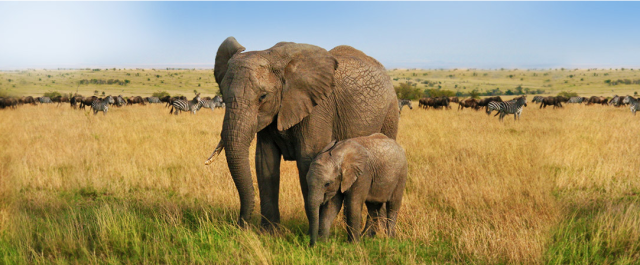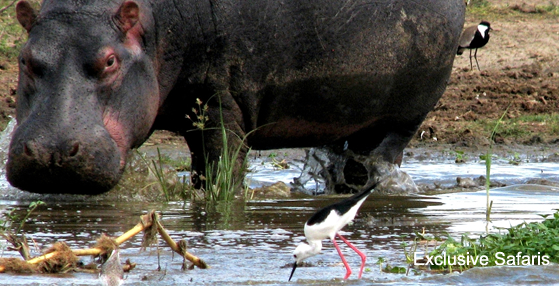East African country, Uganda is considered to a bird’s paradise that has a wide variety of bird species. With an increasing reputation of having some of the best sites in the world for bird watching, Uganda hosts over 1500 species of birds.
For every bird lover, it will be a treat to watch some most sought exotic birds in Uganda like:
- Shoe bill stork
- African green Broadbill
- Green-breasted pitta
- Karamoja Apalis
- Black bee eater
- Red fronted anti pecker
Let us discuss now the most popular destinations for enjoying a wonderful birding tour in Uganda:
Entebbe Botanical Gardens:
This is a beautifully landscaped area covered with trees and by walking through the garden, you can find number of vervet monkeys as well as spot some bird species like Broad- billed roller, casqued hornbill, African Fish Eagle and Eastern Grey Plantain- eater.

Birding in bwindi
The varied habitats of Uganda’s oldest forest mean it is the ideal habitat for a variety of birds, with 350 species recorded, including 23 endemics (90% of all Albertine Rift endemics) such as the Short-tailed Warbler and Blue-headed Sunbird as well as seven IUCN red data listed species.Easy to see are the African Emerald Cuckoo, Common Bulbul, African Blue and White-tailed Blue Flycatchers and Red-headed Bluebill.
Birding takes place along the main trail, the Buhoma Waterfall Trail and along the bamboo zone and Mubwindi Swamp trail in Ruhija
Birding in kibale national park
Bird watching tours start at 7am at Kanyanchu; you are advised to book in advance. Rare species include the Papyrus Gonolek, White-winged Warbler, White-collared Oliveback and Papyrus Canary.
Bigodi Wetland Sanctuary, located just outside the park, is home to 138 bird species which may be seen during guided walks along the boardwalk trail and viewing platforms. These could include the White-spotted Flufftail, Yellow-spotted Barbet, Hairy-breasted Barbet, Yellow-billed Barbet, Western Nicator, Grey-winged Robin-chat, White-tailed Ant-thrush, Brown-backed Scrub-robin, Black-and-white Shrike-flycatcher, Brown-throated Wattle-eye, Superb Sunbird, Brown-crowned Tchagra, Bocage’s Bush-shrike, Black Bishop, White-breasted Negrofinch and Black-crowned Waxbill among others.

Birding in lake mburo national park
The best birding spots in Lake Mburo National Park include the swampy valleys of Warukiri and Miriti, and the roadsides between Rwonyo camp and the jetty. There are also ideally-situated viewing platforms at the salt lick, in Miriti Valley, and in Rubanga Forest. Species observed at these locations include the Rufous-bellied Heron, Bateleur, Coqui Francolin, Grey Crowned Crane, Black-bellied Bustard, Brown-chested Lapwing, Emerald-spotted Wood-Dove, Brown Parrot, Red-headed Lovebird, Ross’s Turaco, Bare-faced Go-away-bird, Green Wood-hoopoe, Common Scimitarbill, White-headed Barbet, Red-faced Barbet, Nubian Woodpecker, Red-shouldered Cuckoo-shrike, Long-tailed Cisticola, Yellow-breasted Apalis, White-winged Tit and Finfoot among others.
Rubanga Forest can be visited using a vehicle or on foot. This is a real draw for keen birders, and prior arrangement should be made with the warden. The rare Red-faced Barbet – only seen in Lake Mburo National Park – is one of the of the forest’s featured species.
Murchison falls national park
Both the game drives and the launch trips offer an opportunity for one to come across distinct birdlife, including savannah forest birds, water birds and Albertine Rift endemics. The commonest species found in the plains include the Marabou Stork, Abyssinian Ground Hornbill, Secretary Birds, Black-bellied Bustards, Open-billed Storks and Widow Bird.
Closer to the river where there are more thickets and woodlands, the commonest bird varieties include the Swallow-tailed and Red-throated Bee-eaters – particularly in the Nyamusika Cliffs; Woodland, Pied, Giant and Malachite Kingfishers; Francolin; Hornbills, Grey heron; Hamerkop; Shrikes; Flycatchers; Cuckoos; Woodpeckers; Crombecs and Warblers. The riverbanks are also home to ducks, geese, stilts and plovers.
The park’s main birding attraction is the Shoebill, best sighted in the dry season from January-March.

Queen Elizabeth national park
Classified as an Important Birding Area (IBA) by Birding International, Queen’s great variety of habitats mean it is home to over 600 species. This is the greatest of any East African national park, and a phenomenal number for such a small area. The park’s confluence of savanna and forest, linking to the expansive forests of the DR Congo allow visitors to spot East as well as Central African species.
Present in the park are numerous water birds, woodland and forest dwellers in the Maramagambo Forest, 54 raptors and various migratory species. Key species include the Martial Eagle, Black-rumped Buttonquail, African Skimmer, Chapin’s Flycatcher, Pinkbacked Pelican, African Broadbill, Verreaux’s Eagle Owl, Black Bee-eater, White-tailed Lark, White-winged Warbler, Papyrus Gonolek, Papyrus Canary, Corncrake, Lesser and Greater Flamingo, Shoebill, Bar-tailed Godwit.

For the best birding in Queen Elizabeth National Park, don’t miss these birding hot spots:
Kazinga Channel, Kasenyi Area, Mweya Peninsula, Maramagambo Forest, Ishasha Sector, Lake Kikorongo, Katunguru Bridge area and Katwe Area Tours can be booked through Katwe Tourism Information Center.
Carefully crafted Uganda birding tours by Exclusive African Safaris or Tour Operator Uganda will help you in enjoying unique and authentic experiences. You will be assisted and guided by a team of trained bird guides to enjoy a safe and exciting bird watching tour in Uganda.
For more information or to book a customized birding tour in Uganda, contact us at +256772887484.
